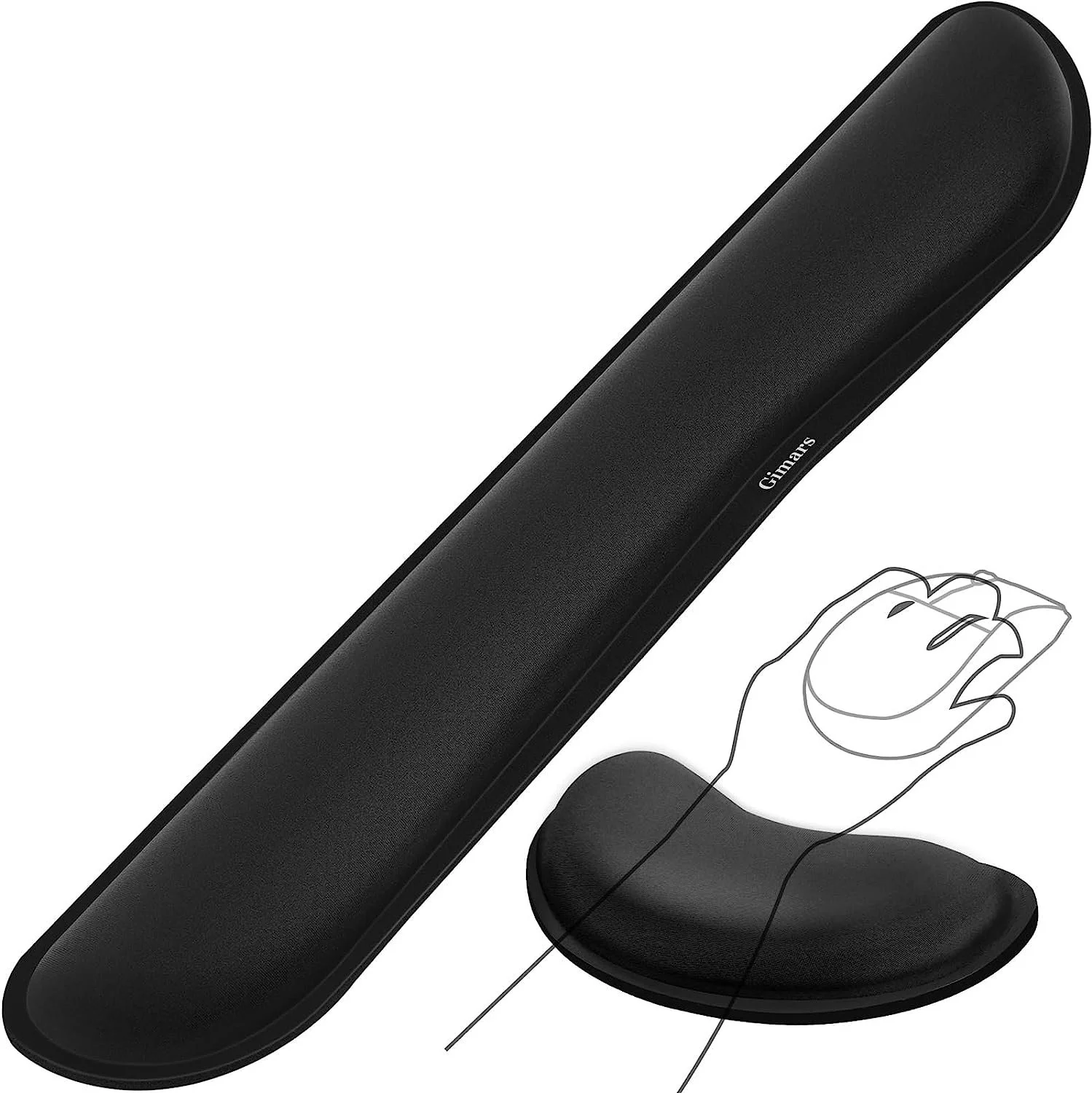5 Tips to Reduce “Deskitis”
Many of us spend extended periods of time working at a desk, whether for work or school. Common complaints among desk workers include pain in the back, neck, shoulders, wrists, and forearms. Here are some tips for reducing your risk of developing these types of pain.
When possible, choose a desk chair with adjustable height, armrests, backrest, and seat depth.
If most of your day is spent sitting at a desk, it is a worthwhile investment to purchase a supportive and comfortable chair.
2. Proper alignment is key!
When seated, your elbows, hips, and knees should be bent to approximately 90 degrees. This may require adjusting your desk chair, adding a lumbar support cushion, and/or placing a support under your feet. If you use a standing desk, be sure to keep your elbows and wrists in good alignment. Other adjustments to consider making include:
Align the top of your monitor at or just below eye level.
Keep your head and neck balanced and in line with your torso.
Keep your shoulders relaxed.
Keep your elbows close to your body and supported.
Your lower back should be supported.
Your wrists and hands should be in line with your forearms.
Make sure there is adequate room on your desk for your keyboard and mouse.
Keep your feet flat on the floor or supported by a block or small stool.
3. Use Ergonomic Computer Accessories
If you are able to change your keyboard and/or mouse to ergonomically designed models, it can help keep your arms, wrists, and hands in more neutral alignment. Wrist cushions in front of your keyboard and mouse can also provide helpful support.
Click on each image to view on Amazon.
4. Proximity
Place your most used items closer to you, and least used items further away. This will reduce excess strain from having to frequently reach across your desk.
5. Move Around Intermittently
Even a brief break every 30-60 minutes can help improve circulation and prevent stiffness. This can include standing in a doorway and stretching out your chest, turning your head side to side, marching in place, and stretching your forearms. And for those of you who use a standing desk, mix in time seated and be mindful of where you hold your body weight. Do you lean forward or roll your feet out to the side?
Whether you stand or sit, utilizing the right ergonomically sound gear and taking intermittent breaks can be a gamechanger for avoiding body pain.
Katherine Reardon - DPT
Katherine, a California native, completed her Doctorate in Physical Therapy from the University of the Pacific in 2019. Prior to that, she attended California State University Stanislaus, where she graduated Summa Cum Laude with a Bachelor of Arts in Kinesiology, concentrating on Health and Wellness Promotion. Katherine's experience as a physical therapist spans both outpatient and inpatient settings, where she developed a strong interest in adult orthopedic conditions and post-operative rehabilitation. Meet Katherine.





